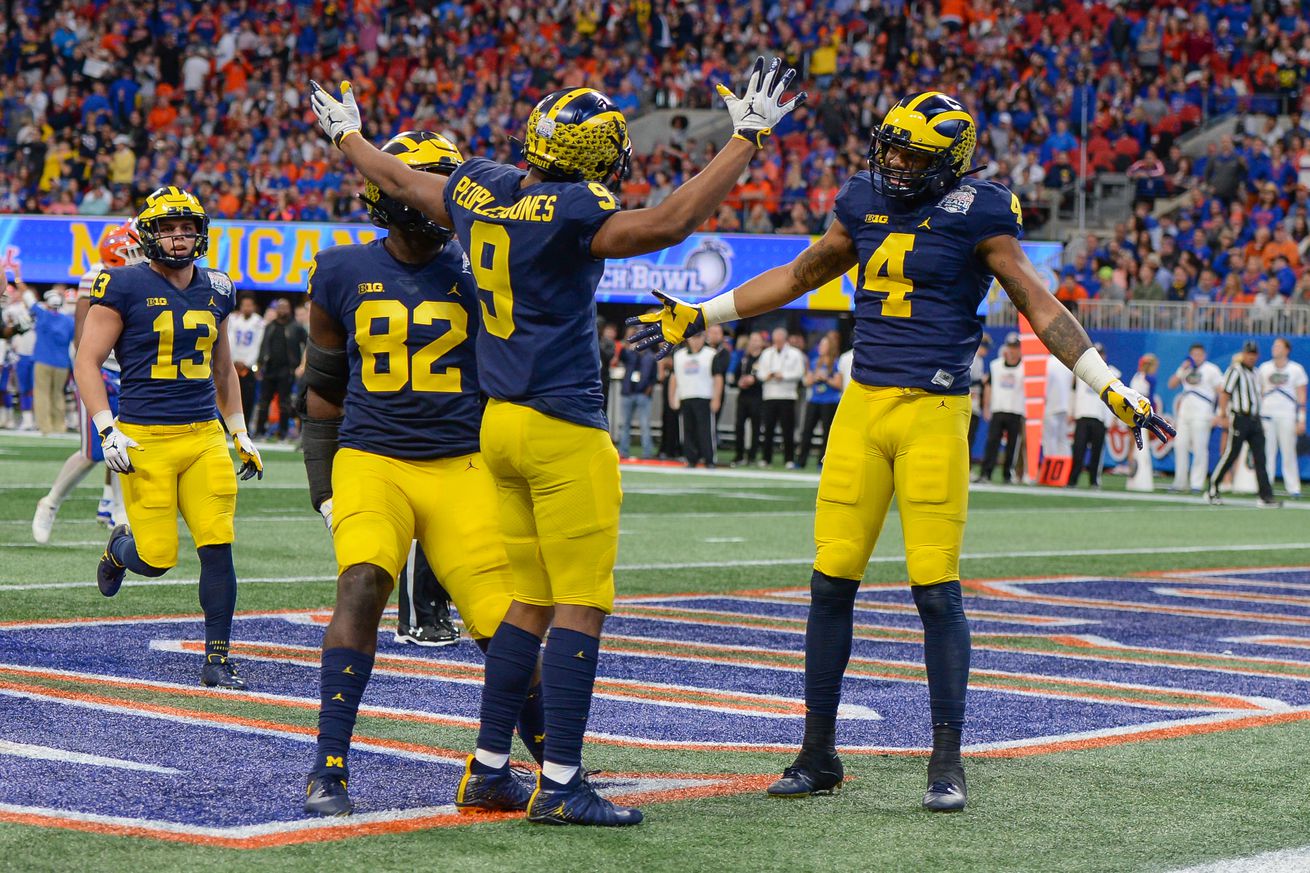
Michigan has struggled to bring in top WR talent for years, but for one obvious reason, recruiting fortunes have brightened:
In hindsight, the trio of Donovan Peoples-Jones (247 Composite No. 12), Tarik Black (116th), and Nico Collins (138th) was the high-water mark of wide receiver recruiting for the Michigan Wolverines over the past decade. Though Jim Harbaugh’s assembly of this receiving corps (plus Oliver Martin) was a cornerstone of the country’s fifth-best class in 2017, it was not supposed to feel like the program’s last shot at grabbing top receivers.
In reality, it kind of has played out that way. There have been some four-stars and talented products to make their way to Ann Arbor, but it is hard to argue against wide receiver recruiting being an overall weakness for Michigan since then. The good news is that the tide seems to be turning — with an obvious reason as to why — but before looking to the future, it is worth reflecting a bit on the past.
How did we get here?
Michigan did not need to go hard at receiver in 2018 (taking an essentially unranked Ronnie Bell), but four-stars Cornelius Johnson (177th) and Giles Jackson (285th) signed in 2019, with AJ Henning (102nd) and Roman Wilson (346th) coming the next season. All four of these players made meaningful contributions, even with Jackson and Henning transferring, and even after 2020 it did not feel like the Wolverines were about to enter into a wasteland at this position.
However, after years of questionable quarterback play and an increasing commitment to be run-over-everything, suddenly the wide receiver classes began to lack both depth and top-end talent. Cristian Dixon (234th) in 2021, Tyler Morris (133rd) in 2022, Karmello English (188th) in 2023, and I’Marion Stewart (310th) in 2024 were all reasonable takes, but none felt like strong enough WR1s to transform the Michigan passing game.
Recruiting rankings are not everything, but none of these four classes were rich with options nor headlined by a future star. Instead, the Wolverines have been accumulating slot bodies and willing contributors, as that is all the aerial attack has allowed. The difference in names and talent from 2017, to 2020, to 2024 clearly shows a sharp dropoff, but the tides are finally turning.
The big benefit
The only way to reverse this trend was to resuscitate the passing game, and the only way to do that was to bring in a superstar quarterback. Without even playing a snap, Bryce Underwood’s impact is already been felt at Michigan, and there is no better place to see that benefit than in the last 12 months of recruiting at the receiver position.
It started with Andrew Marsh (117th), last year’s big get who was considered a top-100 prospect by most sites for most of the process. Zion Robinson (132nd) committed on Wednesday to kick off the 2026 recruiting class, which still awaits decisions from prospects like Calvin Russell (47th) and Travis Johnson (144th).
With March and Robinson (and certainly Russell, should he commit), it is undeniable that wide receivers are starting to view this program differently. Michigan is not going to fully abandon its identity, but no longer should the offense be seen as run-only. Receiver recruits want to play with someone like Underwood, and the big-name prospect are only going to get more and more interested over the course of his career in Ann Arbor.
Whether or not these recruits provide actual production remains to be seen, but it unfortunately appears that the prospects from prior classes were adequately ranked given their limited success. This should give confidence for what lies ahead, even for those skeptical of recruiting stars, as the level of incoming talent is taking a giant leap forward. Having an elite quarterback will definitely boost the Michigan offense, but he is not going to be surrounded by no-name receivers either.
